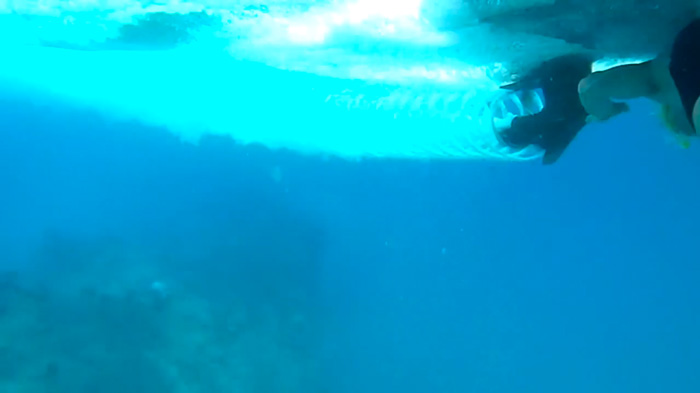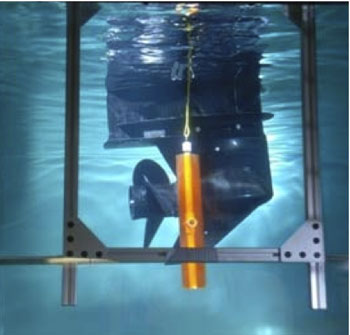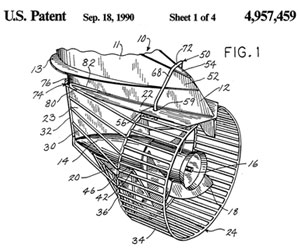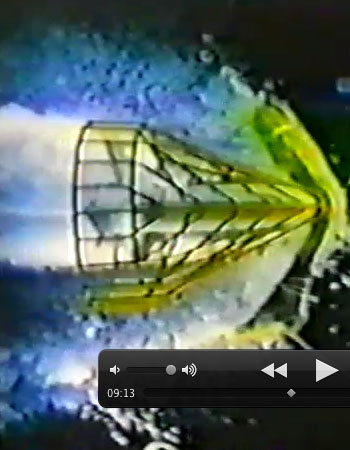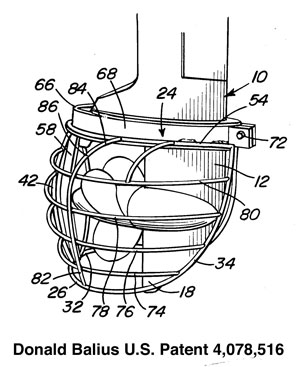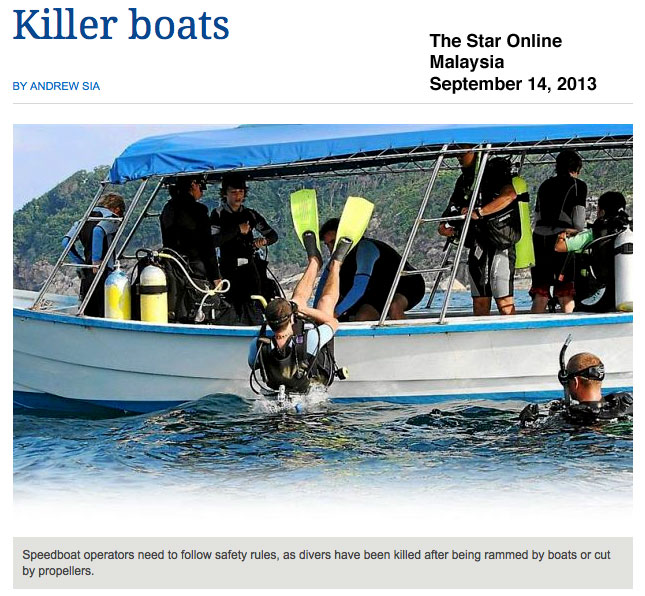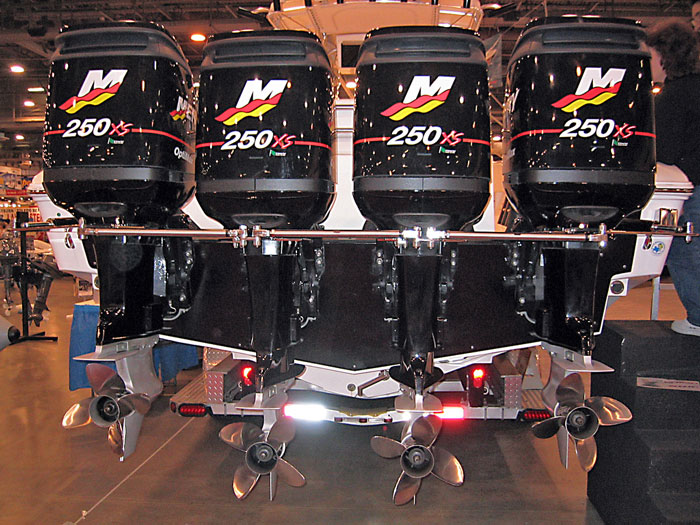Blunt Trauma & Biomechanics of Boat Propeller & Propeller Guard Strikes: Part 2
This post is Part 2. Please view Part 1 first.
Biomechanics
Per Biomechanics of Chest and Abdomen Impact. Chapter 53. David Viano and Albert King. Biomedical Engineering Fundamentals:
“The biomechanical response of the body has three components: (1) inertial resistance by acceleration of body masses, (2) elastic resistance by compression of stiff structures and tissues, (3) viscous resistance by rate-dependent properties of tissues.”
At moderate impact speeds, your body just deforms some to accept the impact OR it deforms enough to buy time until the affected segments of your body begin to move to absorb the load.
At higher impact speeds the ability of the body to deform is limited by its inertial and viscous properties. It can’t deform if it can’t get some of the internal fluids and tissues out of the way fast enough. You can be severely injured before your body can get out of the way.
The ability of an organ to absorb impact energy without failing is called tolerance.
Our bodies are well suited to try to protect our most valuable organs. For example: our brain is surrounded by our skull, our heart, lungs, liver, and kidneys are protected by our backbone and ribcage. Our extremities (arms, hands, legs, feet) are less protected, but more expendable. We can still survive if they are crushed (and we quickly receive the level of trauma care available at many major hospitals). One of my uncle’s had his arm crushed between a dump truck bed and its undercarriage a few years ago. Even though he was trapped for several hours before anyone became aware of his predicament, his arm was saved and he has since been been able to recover much of his previous capabilities. If his chest or head been similarly smashed, he would probably no longer be with us.
Vian and King note chest impacts compress the ribcage causing a tensile strain on the outside of the ribs. As compression increases, so does the risk of rib fractures. They also note that blunt impact of our upper abdomen (just below our rib cage) can compress and injure our liver or spleen before our body begins to accelerate from the force.
Common techniques to minimize blunt trauma injuries are to:
- Avoid the impact
- Reduce the impact velocity of the object
- Reduce the mass of the object
- Spread the impact energy over the strongest body structures
- Wear protective equipment or pads
- Extend the time allowed for deceleration (reduce peak acceleration of your body)
To design protective systems, Viano and King say you need to understand injury mechanisms, quantify human tolerance levels, and develop numerical relationships between measurable engineering parameters such as force, acceleration, deformation, and injury. These relationships are called injury criteria.
We owe much of the knowledge in this area to the automotive industry. They have extensively studied car crashes and the ability of passengers to survive them. Limits have been established for many situations to prevent the breakage of bones, to avoid compression injuries, and to prevent viscous injuries. For example:
- Blunt chest loading of up to 740 pounds can be tolerated with minimal risk of serious injury
- Chest compression of up to 20 percent with moderate duration loading is fully reversible.
- Above a velocity of deformation of 3 meters/second, an individual’s tolerance to compression is reduced as the speed of deformation increases.
Please note – the limits above may different for submerged individuals.
Researchers have found that for chest injuries, the product of the velocity of deformation (V) and the percent of compression (C) is useful in estimating injury type (crushing, viscous, or blast). Velocity of deformation times the percent of compression is sometimes called the Viscous Response. Viscous injuries tend to occur when the peak value of VC (VCmax) is equal to or greater than one meter per second (like when the chest is 33 percent compressed and the velocity of deformation is 3 meters per second).
Serious blunt trauma viscous chest injuries actually occur at the time of VCmax which is typically at about half the time for the chest to reach maximum compression. Meaning, the chest is still being compressed by the blunt object AFTER the major viscous injuries have occurred. Rib fractures also happen at that time (VCmax), well before maximum compression of the chest.
At very high rates of loading (rates of compression), such as those seen in blast waves (like roadside IEDs) injury occurs with less than 10 to 15 percent compression. The injuries result from the high rates of energy transfer to viscous element of the body.
Over many years of study, researchers have developed tables of human tolerances for many chest and abdomen blunt trauma impacts. Automotive designers use the data to design safer cars. While these limits have been established in air, they provide a guideline for what could be established in water.
These and other studies note blunt force trauma causes four types of tissue damage:
- Abrasions (skin friction)
- Lacerations (shear stress tears in tissue)
- Contusions (bruises with soft tissue damages)
- Skeletal fractures (cracked or broken bones)
Things Happen Very Quickly in a Propeller Strike
At least one video exists of a live human being struck by a boat propeller. Our Diver Struck by Propeller Caught on Underwater Video post shows several stills from that encounter and provides a link to the video.
In the image above, the snorkeler is just about to be ran over by the propeller. He is already under the boat. The image comes from a video taken by a diving companion. The actual impact happens very quickly as the boat passes over him.
The same goes for cadaver testing and testing using ballistic gelatin at the State University of New York (SUNY) at Buffalo. Events happen so quickly they can only be visually analyzed by using high speed video.SUNY Cadaver Testing of Propeller Guards
Back to marine drive applications, imagine an outboard boat without a propeller being towed by another boat. If a cylindrical body part, such as a person’s lower leg, is suspended in the water perpendicular to the oncoming drive (without a propeller) what happens depends on how fast the boat is being towed. The same holds true if the drive had a propeller guard that closely fit the leading edge of the drive, like the Snyder guard. As seen in the patent application it “hugs” the leading edge of the drive and presents a vertical leading edge to those in the water similar to the leading edge of the drive. Back in 1990, Mercury Marine and Outboard Marine Corporation (OMC) conducted a series of tests in the large circular tank at the State University of New York (SUNY) at Buffalo. A portion of that work was striking cadaver legs with the leading edge of the Snyder guard.The image at left is take from the bottom of the tank looking up. The cadaver leg, including foot, is suspended across the path of the oncoming outboard and guard. The guard has stuck the leg in the upper shin area at 13.6 mph and obviously fractured the leg. The velocity of the guard in combination with the mass of the leg and the added mass of the leg did not allow the leg and foot to swing back around before it fractured.
The testing used cadavers from elderly people that had been frozen and stored a long time, so the speeds corresponding to these types of injuries may not be accurate. The point is that as speed increases, eventually the leg will fracture and perhaps be nearly severed, or severed by the leading edge of a drive with out a guard, or by a guard that “hugs” the leading edge like the Synder guard show in the image.
We edited two brief test runs from the 1990 SUNY testing. The 10.4 mph and 13.6 mph runs in slow motion are on the video below. There is no sound/audio on the video.
The 13.6 mph run severely fractures the leg and breaks it loose from its mounting.
The 10.4 mph run was slow enough to allow the foot and leg to swing back around the guard. The investigators said the leg still had a fracture, but it was much less severe than the 13.6 mph run.
If the leg had encountered the sloped surface of the guard and not been across the leading edge the cadaver would have fared much better. Similarly, if the Snyder guard had a more bulbous leading edge (broad rounding to the front), or incorporated some shock absorbers to allow some give to stretch out the impact time, the cadaver may have fared better.
Boating Industry Says Larger Cross Sectional Area of Propeller Guards is a Blunt Trauma Hazard
Back in 1980 the boating industry estimated the increased cross sectional area of a propeller guard vs. an open propeller. They used a very large bulbous basket type propeller guard (the guard at right) and said prop guards present a cross sectional area to those in the water 2.5 times as big as the area of an open propeller. By 1989 the industry had increased their estimate to three times that of an open propeller. The industry failed to note ring type guards present about 1.25 times the cross sectional area of an open propeller.The industry said prop guards are dangerous due to the potential for blunt trauma injuries from all this additional cross sectional area.
We cover these claims and the industry’s calculations in our Propeller Guards Increase Cross Sectional Area and Thus Increase Risk of Injury? post.
The boating industry has long objected to propeller guards claiming the increased cross section area (vs an open propeller) creates a deadly blunt trauma hazard to those in the water. When their own calculations are used on modern propeller guards the increase in cross sectional area is just a fraction of than their previously exaggerated estimates. Plus if cross sectional area in the water is an issue, why are they promoting to twin outboards, triples and quads in their commercials and advertisements? These additional drives add a tremendous amount of cross sectional area in the water, but the issue of creating additional blunt trauma hazards is never raised. Also, what about boats themselves? Boats place much more cross sectional area in the water than guards. If guards are dangerous, are boats exceptionally dangerous, as seen in this headline from The Star Online?
Hardware in the Water
The industry’s opposition to propeller guards based on increased cross sectional area increasing the possibility of blunt trauma does not hold water. How can they promote the use of three or more outboard motors on the same boat (hanging three or more times as much stuff in the water) while at the same time reject guards due to the risk of blunt trauma from the additional cross sectional area? For example compare all the hardware dragging in the water in the two images below to a single propeller guard on a small outboard motor.
The image above of the Quad Merc 250s is available a few places online. A post on The Hull Truth attributes it as a 2006 model.
Now (in 2016) since creating this post we are seeing quints with larger outboard motors (even 400 quints). For example, the Mercury Verado quint 300s on The Golden Rule shown below. The Golden Rule was later in a high profile boat propeller accident after the Mercury tweet below.
It seems pretty apparent after seeing the large triples, quads, and quints the industry is not really concerned about the amount of hardware dragging in the water. Some might suggest the industry is more concerned about the money from selling all these large expensive outboards and the additional sales they generate by brand appeal than they are about people in the water.
Are Boat Propeller Cuts Really Nice and Clean?
The boating industry has often commented that propeller cuts are nice clean, easy to treat cuts vs. blunt trauma injuries. However, propeller cuts are widely known for being infected from organisms in the water. Propeller wounds are sometimes left open for several days before sewing them shut to try to kill the infection. Wounds that have been closed often have to be reopened due to infections.
We have seen countless stories on propeller wounds being infected from the water and spoken with several victims and family members who have endured those challenges. A recent example, On June 8, 2013 Chase Edwards, 12, was on Joe Pool Lake in Texas with his mother. The boat they were in collided with another boat in the dark, Chase was ejected and struck by a boat propeller. Per a 14 July 2013 MyFoxDFW story, Chase is battling infections, suffered a broken pelvis, ankle, and thigh. Cuts in his legs “are infected due to the lake water, which doctors are trying to control.” Doctors estimate Chase will be in Children’s Medical Center for at least six months.
In addition to infection issues, a recent reference reports propeller wounds are much more blunt and crushing than widely thought.
“Patterns of Trauma Introduced by Motorboat and Ferry Propellers as Illustrated by Three Known Cases From Rhode Island”.
Semeraro, Passalacqua, Symes, and Gibson.
Journal of Forensic Sciences.
Vol.57. No.6. (2012). Pgs. 1625-1629.
The “Patterns of Trauma” reference above reports propeller wounds are cause wounds much similar to blunt trauma than previously thought.
Similar results were found in a 2008 Chinese study.
Characteristics and Mechanisms of Boat Propeller Injuries.
S. Yu, YW SHen, AM Xue.
Published in Fa Yi Xue Za Zhi (Journal of Forensic Medicine a quarterly journal).
Vol.24. No.1. Pgs 43-46. (2008).
The Chinese researchers explore the differences between propeller injuries and corpse dismemberment (how to tell if a body found in the water or on the beach was hit by a propeller or foul play such as hit by an axe or hatchet). 100 autopsies of boat propeller injuries were performed between 1994 and 2005 in Huzhou district, Zhejiang province. The victims were studied for characteristics of the wounds, abrasions, fractures, and clothing. Those characteristics were then compared with similar studies of corpse dismemberment. Chinese researchers found the wounds to be distinguishable due to differences in the amount of force and recoil force, and in differences mechanical cutting (propeller) vs. using a sharp instrument. Boat propeller injuries come from high speed props with huge splitting power and mechanical cutting. Foul play results in bodies being dismembered by sharp instruments. The to methods lead to different cross sectional wound characteristics. Note – the article is in Chinese.
Propeller Cut Analysis
Propeller strikes to large marine mammals often leave a repetitive chop pattern we are used to seeing in news photos. Several researchers have taken to analyzing those repetitive chops to determine the diameter and pitch of the propeller that made them. Tom Pitchford of the Marine Mammal Pathology Lab, Fish and Wildlife Institute, Florida Fish and Wildlife Conservation Commission is among the researchers working this field, including co-authoring the paper below with several other researchers, and Dick Snyder (long time Mercury Marine propeller guard expert witness).
Forensic Methods for Characterizing Watercraft from Watercraft-Induced Wounds on the Florida Manatee.
Marine Mammal Science
Vol.23. No.1. (January 2007)
Pgs. 110-132.
The repetitive chopping pattern of being struck by each blade as the propeller rotates seen on large marine mammals is often missing on humans. Large marine mammals are very heavy (have a lot of mass). Just like humans, some major components of their body might be represented by cylinders. Their cylinders are so large the added mass alone becomes a huge force when trying to move them in the water. Their bodies are somewhat of a large stationary canvas the propeller paints injuries on.
Humans are much smaller than large marine mammals. Being struck by a boat at speed can knock them flailing all over the place. Plus humans may be more likely to initially engage the prop with their appendages (legs, feet, arms, hands) than marine mammals. Boats have enough power to knock humans around a with their propellers, while large marine mammals just stay put for the duration of the strike.
Unlike marine mammals that may have previously been relatively stationery in the water, many humans just fell overboard and are dynamically trying to recover themselves when they are struck. All the activity of trying to get themselves back to the surface and trying to avoid being struck, makes them a much less stable target than a lounging manatee.
While we do see humans with many repetitive strikes on their trunk or a leg from time to time, often we see humans with chops to multiple body parts, or a few repetitive chops on one body part.
The following comments are purely speculation and have not been proven. From the propeller strike victims we have observed, it seems like smaller horsepower outboards tend to leave classic repetitive chop patterns more often than higher horsepower outboards. That may due to:
- The strikes being less violent (less powerful) and less likely to throw your body around
- Smaller outboards tending to be on slower moving boats (less momentum at time of strike)
- Smaller outboard tend to have lower pitches than larger horsepower outboards (the chops are closer together for the same RPM and gear ratios)
- Smaller outboard propellers are smaller in diameter, thus creating wounds with less depth (less violent strike)
- Smaller propellers may be less likely to amputate limbs before a repetitive pattern could be marked on them
- Smaller propellers tend to be aluminum propellers. Their blades are thicker that stainless steel propeller blades more often seen in larger propellers. The thicker blades of small propellers reduces their ability to amputate limbs (thicker blades are harder to drive deep enough to amputate limbs).
- Large stainless steel propellers on larger outboards have more momentum than smaller aluminum propellers. As a result, the larger stainless steel propellers deliver more energy and and are more likely to result in amputations before the repetitive pattern can be observed.
The Future
Much remains to be learned about blunt trauma with respect to propeller guards, especially in terms of developing some typical impact numbers, forces, velocities, CV, and the body’s tolerance of these values when in the water.
A related field of blunt trauma study is the study of blunt trauma to large marine mammals (whales, manatees, dugongs, etc.). Its sad that sharp and blunt trauma injuries to large mammals, caused by vessels and propellers have been studied much more than similar injuries to humans. For example, see Gross and Histologic Evidence of Sharp and Blunt Trauma in North Atlantic Right Whales Killed by Vessels. Campbell-Malone, Barco, Daoust, Knowlton, McLellan, Rotstein, and Moore. Journal of Zoo and Wildlife Medicine. Vol.39 No.1. (2008). Pgs. 37-55.
Some work is being done trying to extrapolate tests done on animals (such as drop impact tests to goat skulls) to humans.
We look forward to an era in which similar efforts are applied to better understanding propeller injuries to humans and their long term effects.
References
Among the more frequently referenced biomechanical studies of of human propeller injuries are:
- Impact Biomechanics of the Human Body. Tyler A. Kress. PhD Dissertation University of Tennessee, Knoxville. May 1996. Part 10: Biomechanical Effectiveness of a Safety Device: A Boat Motor Cage Type Propeller Guard. Pgs. 179-188. Based on the Mercury/OMC testing at SUNY.
- Injury analysis of Impacts Between a Cage-Type Propeller Guard and a Submerged Head. Michael Scott, John Labra, Herbert Guzman, James Benedict, Harry Smith and James Ziegler. Biodynamic Research Corporation. 1993. SAFE Association.
- The Anatomy and Biomechanics of Experimentally Traumatized Human Cadaver Lower Extremity Components. David James Porta. Dissertation. Doctor of Philosophy. Dept of Anatomical Sciences and Neurobiology. School of Medicine. University of Louisville. Louisville Kentucky. 1 August 1996. Pages 148-166. Based on the Mercury/OMC testing at SUNY.
- Study of Impact Tests. Dr. D.F. Huelke. (swinging an instrumented crash dummy head into a drive unit in the air, not submerged).
- Addendum. Study of Impact Tests. Dr. D.F. Huelke. March 1988. (continuation of testing above)
- The OMC/Mercury Marine SUNY December 1990 test videos.
- Simulated Underwater Flesh Impact Test video. (Mercury Marine – Dick Synder Sausage Test video.)
- X2 Biosystems – make sensors being used to evaluate human head accelerations in sports
